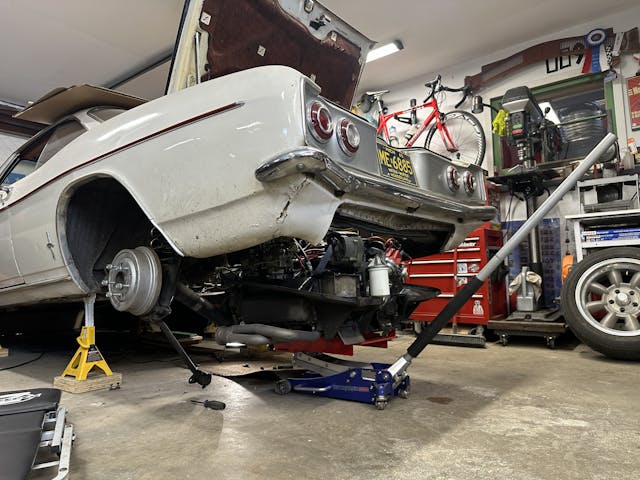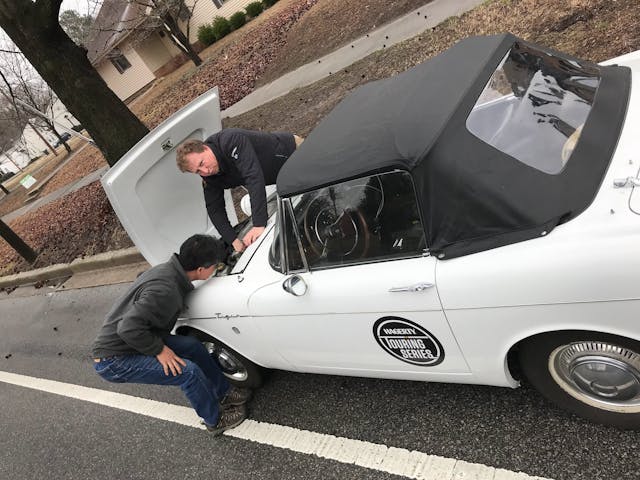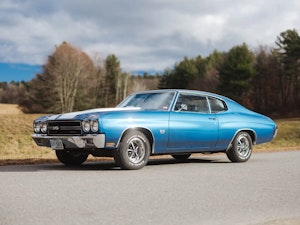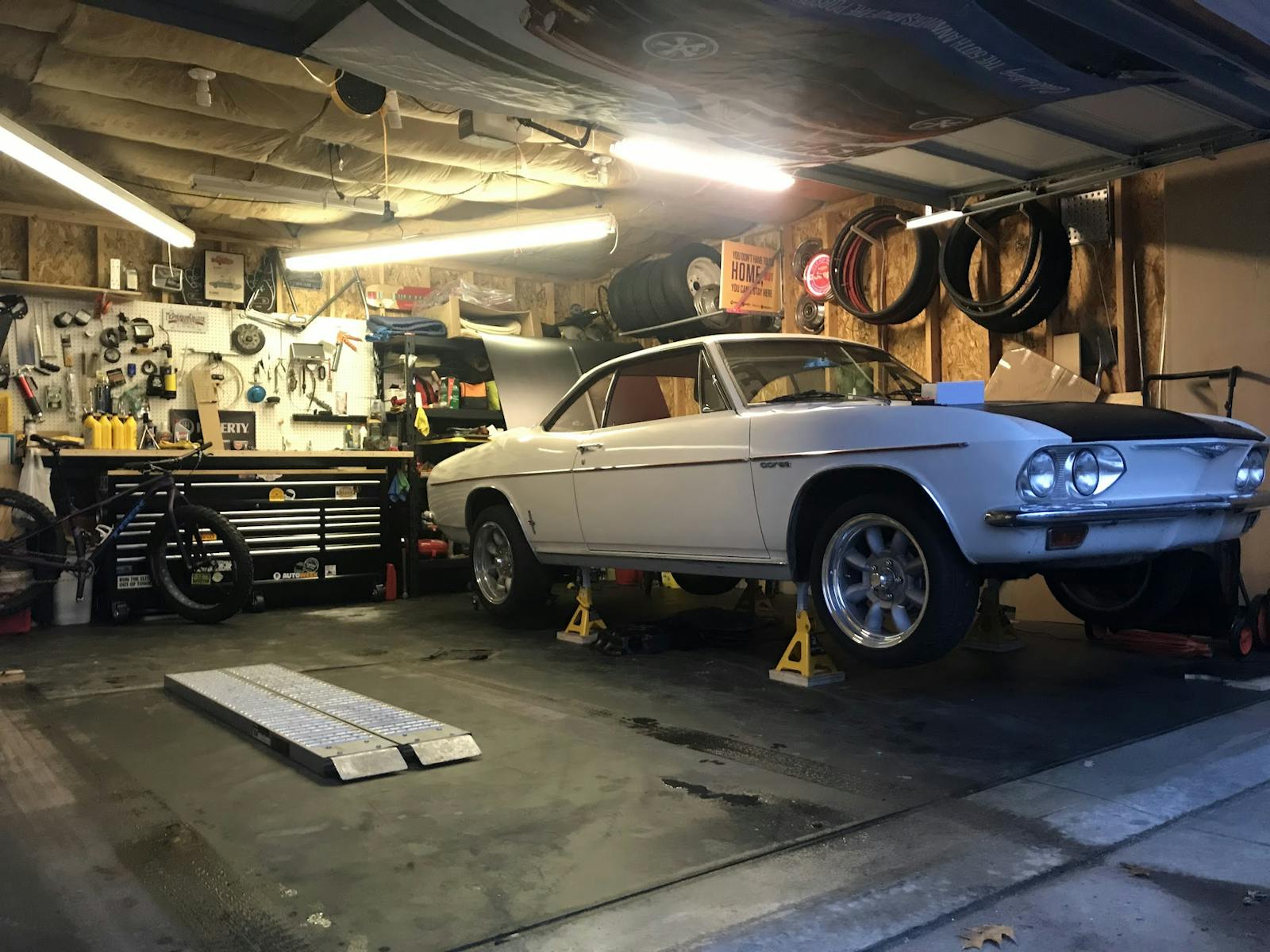Media | Articles
6 DIY Lessons We All Learn Eventually
Like many other tasks and toils that modern humans endure and embrace over their lifetimes, maintaining a vintage car comes with a learning curve. We all start at the bottom, looking up at a mountain of knowledge and understanding that can somehow often be intimidating, exciting, frustrating, and humbling all at once.
It’s a climb that many of us have made some amount of progress on. Often along the way, we’re either trying to learn from those ahead of us or trying to help those a few steps behind. While the project car learning curve is unique to every person, there are a few universal truths that anyone who has attempted a project car will experience. Here are six I’ve become intimately familiar with. Be sure to add yours in the comments below.
An hour of diagnostics is worth two hours of parts replacing

Fixing something that is not broken or malfunctioning is just a waste of time at the end of the day. This means that the best course of action at the onset of a project is to do diagnostics and confirm that the problem you are working on actually needs solving.
Diagnostics aren’t the fun part of a project, but understanding how a system of parts works when attempting to restore function makes for a much less frustrating time under the hood. Haphazardly throwing parts at a project can tax your pockets and your spirit to an unnecessary degree.
Project car budgets are little lies we tell ourselves

The initial purchase price of a project car is often the main number that comes to mind when thinking about the partially finished hulk sitting in the driveway. While that is part of the expense and cost of playing with cars, many other things total up and conspire to pull pennies, dimes, and dollars from your bank account.
Marketplace
Buy and sell classics with confidence
A trip to the parts store for a $10 part can easily turn into a $50 trip when you grab that can of brake cleaner, some random hardware, and a couple of quarts of oil to keep up with that leak you haven’t gotten to yet. Was that still a $10 parts run? How much accounting do you really keep? I know I’m bad about keeping accurate totals, and I’m certainly not in the minority.
It’s okay to call the professionals

Project cars can be extremely rewarding, but often the reward requires going through the frustration of actually doing the work. Sometimes things spiral to a daunting point where we may or may not have the skills, time, or tools to handle. While some thrive on clawing their way out after getting in over their head, that is not for everyone or every situation–and that’s okay. There is no shame in calling in a favor from someone more experienced than you or simply booking an appointment with a professional. Knowing your limits is the key to having fun while working on cars.
Expect the unexpected

Even on projects you have experience with, the aging components of most vintage vehicles mean that whatever you think the problem is might be nothing more than a red herring to the real issue. Add in that our old cars have endured decades of driving but also decades of being maintained, or sometimes more accurately, “maintained.” When your diagnostics point to something that could be caused by two problems, don’t rule out either until you’ve put your eyes and hands on all of the potential offending parts.
“Making it work” is not always worth it

When you do run into the unexpected, there is always the temptation to take what you have on hand and create a solution right then and there. Sometimes that is the best course of action but more often than not everyone benefits from taking a moment to sit with the issue and make sure that you are not putting a band-aid on a much needier wound. Taking the time to craft the proper solution might not always be an option, but you should consider that in earnest when the opportunity allows.
Your memory is so much worse than you think

How many of us have disassembled something—a carburetor for instance—and told ourselves “I’ll remember where that check ball goes” only to get sidetracked by something else for an hour? When you return to the workbench, that scattered mess of parts suddenly feels like the world’s dirtiest puzzle that you swear now has an extra check ball.
Documenting each step in a process or having the proper reference materials on hand to ensure this doesn’t happen is often no more difficult than buying a shop manual or snapping a handful of pictures with a digital camera or cellphone. Writing down reference notes is not cool, but you know what else isn’t cool? A mysterious extra check ball. If you want to minimize the time that your project is in pieces rather than on the road, swallow your pride and take good notes.


















A BIG mistake that I see constantly–people beginning a project with 1. No idea of how long the repair/project will take; 2. Doing disassembly before diagnosing (I believe that you covered that one well); 3. Beginning a project or repair in the open driveway or back yard, etc.–not banking on Nature’s Elements–that rainstorm, big wind, Night–ever begin a project in the evening–then night falls and the next day you have to go to work–the project lies there for days, weeks and-sometimes years; 4. Beginning a project without having the proper tools–that’s a sure way for the project to stall!; We have brains, we have eyes–we have manuals, we have phones–a little research time pays BIG dividends! That’s for beginning this important Thread, Kyle! (BTW–not everyone is like our son–he removes a part, turns it round and round, examining it and lays it aside. He does the same with every part. I discovered that he’s “photographing” the parts mentally–they go back just as he removed them–without having made notes or having taken photos. Wouldn’t it be nice to be that way?)
First a shoutout to Ken Gordon, well said!
All of the manuals for most vehicles are now available electronically. Assembly, welding, sealer, electrical, you can have them all on your phone to refer to when struggling with disassembly or when you finally get to put parts back together.
When I realized I didn’t know what I was doing when I bought my 66 Mustang off eBay, I started the quest for factory based information. For me, a must on any project!
Cell phones have made it easy to document conditions and the state of assembly and disassembly. In the old days, I would lay out parts in sort of an exploded view to remember how pieces went back together. Now I can take photos at any state of assembly and any angle, and also add video if needed. This is another example of how embracing tech can make your life better, even when working on a low-tech car.
MOST IMPORTANT: not every car is savable no matter how much you love it. Know when to walk away (or not start in the first place).
In the words of the late, great Kenny Rogers – “Know when to walk away – know when to run”.
I baggie every nut, bolt, and fastener, if that’s one baggie with just one nut in it so be it. Every baggie is labeled with what the part is and what size it is. If a bracket comes off with it then the bracket goes in the baggie too.
All baggies are boxed or laid out in order they were removed, then reassembly goes back to front. If a bolt needs replaced it’s baggie comes to that hardware store with me. I never have left over parts this way and if the job gets put aside for a week or longer I don’t have to rely on my memory. Also if you drop a bolt that’s in a baggie it doest go bouncing under a cabnet or shelf.
Ever work with the guy whose credo was “if it don’t fit, force it; if it breaks it needed replacement anyways”? Or “if your hammer doesn’t work…borrow a bigger hammer”?
Article scares me & I’m fearless!
I have a close friend and wrenching buddy who is a much better mechanic than me. But I have restored far more cars and motorcycles to completion than him. On a number of occasions, he has taken cars or bikes completely apart, meaning every nut and bolt, only to have the parts sit for years before finally being sold off to the next project owner.
I restore one section at a time. Perhaps I will rebuild the front end first, then the brakes, then the rear suspension, etc. I complete the rebuild of one section before starting on the next. That way, I still remember how it went apart when I put it back together and the project doesn’t seem as overwhelming because I can see progress long before the project is done.
On the memory thing I do what is in the picture and put things in order so I know what side to put them on or how to put them back together.
I can’t put anything back together dirty or looking untidy. I always wind up spending as much time or more cleaning and repainting the repaired parts and surrounding area. I also can’t work in a messy area. I’m frequently stopping to sweep, mop, put tools back in the drawer, etc. If you are obsessive-compulsive like me, estimated time must multiply by not twice or three times but at least four. To make it five, I often absentmindedly carry a tool with me while I go to the storage area for supplies or fasteners and then wonder where it went when I return to the car. I’ll spend the next thirty minutes looking for it, finally retracing my steps to find I set it down on a shelf in storage while sorting through the bins.
Your phone camera is your best friend. Take pictures at each step of tear down.
Advice from a somewhat old man, stop and think about the problem.walk away for a while. Sleep on it . Lay out your parts in the order you took them off. Take pictures and more pictures. Research the internet. Every problem you encounter someone else has gone through. There is no excuse now with all the information out there. Organization and cleanliness is a must. A clean work environment is a productive environment. When in doubt Lubricate. Use the right tool for the task. If you don’t have the right tools, borrow or buy them. The wrong tool can do more damage than the original problem. Don’t panic and make things worse. I didn’t learn these lessons until I was 50yrs old. I just hate watching the younger generation struggle like I did in my life. Read,watch listen and learn. End of rant.
I’m surprised no one mentioned, “Not all shortcuts are shortcuts”. How many times have we looked at the factory manual thinking “Do I really have to take off all those parts just to get to that one little hose? I can probably just squeeze a tool right in there”…. and after spending an hour trying to get your “shortcut” to work, you realize, I guess I do have to drain the system to remove that one part to get to that clamp on the hose. Next thing you know, you are 3 hours deep into a 1-1/2 hour job.
However, It is worth noting that there are some pretty ingenious shortcuts out there, so pick and choose wisely.
Just to add to the chorus of people who put things in plastic bags, and adding in my cheapskate nature, I’ve learned that I can buy boxes of sandwich or snack size bags at a dollar (and a half!) store, and even better, if you write on the bag with a Sharpie, a paper towel or rag wet with alcohol will wipe that writing off in seconds. Bingo – you can use the bag again and again.
I’ve been logging ever hour and dime I put into my 61 Rambler convertible/2003 Ranger 2.3L Duratec w/5 speed auto on-line at https://theamcforum.com/forum/look-what-followed-me-home-61-american-convert_topic117692.html. It’s going way slower than expected, partially due to my 94 year old father-in-law falling, breaking his neck (for the second time — did it six years ago too!), and having to move in with us over the last three months. But I got sidetracked developing a disc brake kit (I didn’t include the development time, but did document it). Right now I’m debating running it some as is (the original drivetrain works, but needs a little tuning, maybe a carb…) or just yanking the engine and getting on with the swap. I’ll have to do the rest of the car if I run as-is. The re-paint from before I got it isn’t that bad, just has a few scars — nothing real bad though. But I feel like getting it moving will delay the swap even longer. I’m including SOME consumables — but only those that will be totally used on the car, not partial items. Anyway, I’ve only got $4720.80 and 86.5 hours in it so far, and the car cost me $3000! I’ve totally rebuilt the front suspension and did some disassembly work on the Ranger… so I haven’t accomplished a whole lot yet either, but at least I can get it down on it’s wheels now! Got to find more time to work on it… That’s the biggest dilemma for most projects — you either have time or have money, seldom do the two intersect perfectly!